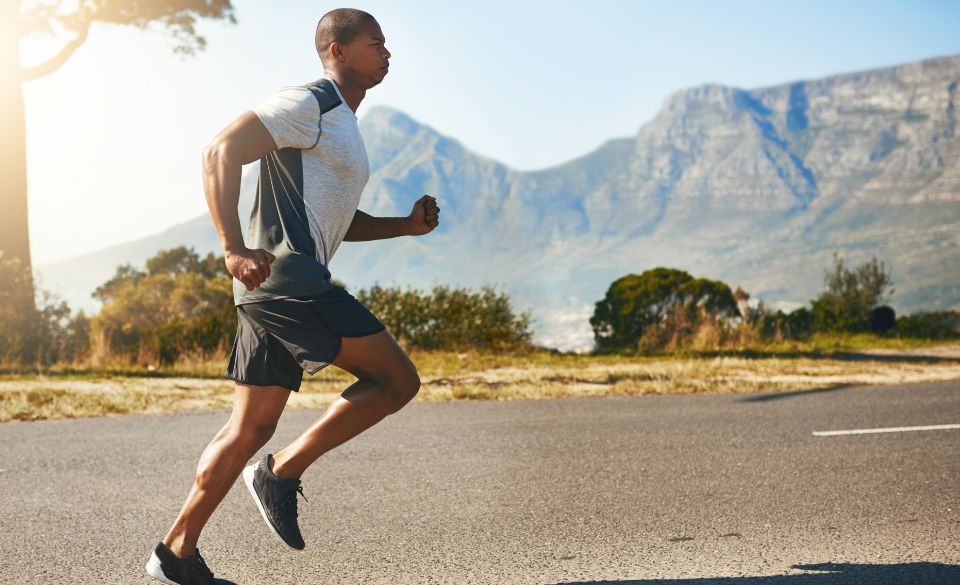
How To Increase Your Running Cadence
Page Contents
Running is an excellent form of exercise that helps you stay healthy and active. Whether you’re a seasoned runner or a beginner, you may be wondering how to improve your running cadence. Running cadence is the number of steps you take per minute while running. Increasing your running cadence can help you run more efficiently, reduce your risk of injury, and improve your overall running performance. In this blog post, we will discuss why running cadence is important and how you can increase your running cadence.
Why Is Running Cadence Important
A higher running cadence means that each foot spends less time on the ground, which reduces the impact on the body and reduces the risk of injury. In a study published in the Journal of Sports Science and Medicine, researchers found that increasing running cadence can reduce the load on the knee joint and lower leg, reducing the risk of running-related injuries. Another study published in the British Journal of Sports Medicine found that increasing running cadence by 5-10% can reduce the stress on the plantar fascia, a common source of foot pain in runners.
In addition to reducing the risk of injury, a higher running cadence can also lead to improved running performance. A study published in the Journal of Strength and Conditioning Research found that increasing running cadence by 10% can lead to improved running economy, which means that a runner can run at a faster pace with the same amount of effort. Another study published in the International Journal of Sports Medicine found that increasing running cadence can lead to a decrease in ground contact time and an increase in stride length, which can result in faster running speeds.
Furthermore, running with a higher cadence can help a runner maintain a consistent pace, making it easier to run longer distances. In a study published in the European Journal of Sport Science, researchers found that runners who increased their cadence while running at a fixed speed were able to maintain that speed for a longer period of time than runners who maintained their original cadence.
Running cadence is an essential aspect of running technique. Increasing one’s cadence can reduce the risk of injury, improve running performance, and make it easier to run longer distances. By focusing on increasing running cadence through drills and gradually shortening stride length, runners can reap the benefits of a higher cadence and enjoy a more efficient and comfortable running experience.
How To Increase Your Running Cadence
The good news is that with some practice and patience, anyone can increase their cadence. Here are some tips on how to do it:
1. Use a metronome: A metronome is a tool that helps you keep a consistent beat. Set the metronome to your current cadence and gradually increase it over time. Aim for an increase of 5-10% at a time.
2. Focus on shorter strides: Shortening your stride length can help you increase your cadence. Focus on taking shorter, quicker steps instead of longer strides. This can also help reduce the impact on your joints and muscles.
3. Use drills: There are many drills you can do to help increase your cadence. One drill is the high-knee march, where you lift your knees up high while running in place. Another is the quick feet drill, where you take quick steps while keeping your feet close to the ground.
4. Gradual progression: Don’t try to increase your cadence too quickly. Aim for small increases over time and gradually build up to your desired cadence. This will help prevent injury and allow your body to adjust to the new running technique.
5. Be consistent: Consistency is key when it comes to increasing your running cadence. Make sure to practice regularly and incorporate cadence drills into your running routine.
Remember, increasing your running cadence is not a quick fix, but with some dedication and practice, you can improve your running technique and performance.
Best Drills For Running Cadence
Drills can be an excellent way to increase your running cadence and improve your overall running technique. Here are some of the best drills for running cadence:
High-knee march: This drill involves lifting your knees up high while running in place. The goal is to bring your knees up to waist height and maintain a quick pace. This drill can help improve your hip mobility and encourage a higher cadence.
Quick feet drill: This drill involves taking quick, light steps while keeping your feet close to the ground. The goal is to increase your step frequency and help your body get used to a faster cadence.
Fast leg turnover drill: This drill involves running at a fast pace while focusing on quick leg turnover. The goal is to take shorter, quicker strides and maintain a consistent cadence. This drill can help improve your running economy and efficiency.
Double leg bounce drill: This drill involves bouncing on both feet in place while maintaining a quick pace. The goal is to encourage a faster cadence and improve your foot coordination.
One-legged hops drill: This drill involves hopping on one leg while maintaining a quick pace. The goal is to improve your balance and coordination, as well as your ability to take quick, light steps.
Remember, it’s important to gradually introduce these drills into your running routine and not to overdo it. Start with just a few minutes of drills per session and gradually increase the duration as your body adjusts. Incorporating these drills into your regular training can help you increase your running cadence and improve your overall running technique.
What Is The Ideal Running Cadence
The ideal running cadence, also known as step rate, is a topic of debate among runners and researchers. However, studies have shown that a higher cadence can lead to improved running economy, reduced injury risk, and increased performance.
A study published in the Journal of Sports Sciences found that elite distance runners tend to have a higher cadence than recreational runners. The study analyzed the cadence of 22 elite and 20 recreational runners and found that the elite runners had a cadence of around 180-200 steps per minute, while the recreational runners had a cadence of around 160-170 steps per minute. This suggests that a higher cadence may be associated with better running performance.
Another study published in the International Journal of Sports Physical Therapy found that increasing cadence can help reduce the risk of running injuries. The study analyzed the cadence of 19 runners and found that those who increased their cadence by 5-10% had a significant reduction in the loading rate on their lower extremities. This means that a higher cadence can help reduce the impact on your joints and muscles, leading to a reduced risk of injury.
A study published in the Journal of Strength and Conditioning Research found that a higher cadence can lead to improved running economy. The study analyzed the cadence of 11 distance runners and found that increasing cadence by 5% led to a significant improvement in running economy. This means that a higher cadence can help you use less energy while running at the same pace, leading to improved performance.
In summary, while the ideal running cadence may vary depending on individual factors such as height and stride length, studies have shown that a higher cadence is generally associated with improved running performance, reduced injury risk, and improved running economy. Aim for a cadence of around 180 steps per minute and gradually increase your cadence over time to see these benefits.
Final Words – How To Increase Your Running Cadence
Increasing your running cadence is a great way to improve your running performance and reduce your risk of injury. By focusing on shortening your stride length, using a metronome, and doing drills to improve your cadence, you can gradually increase your cadence over time. Remember to aim for a cadence of between 170 and 180 steps per minute, but also focus on other aspects of running technique to become a more efficient runner. With practice and patience, you can improve your running cadence and enjoy all the benefits of running!



